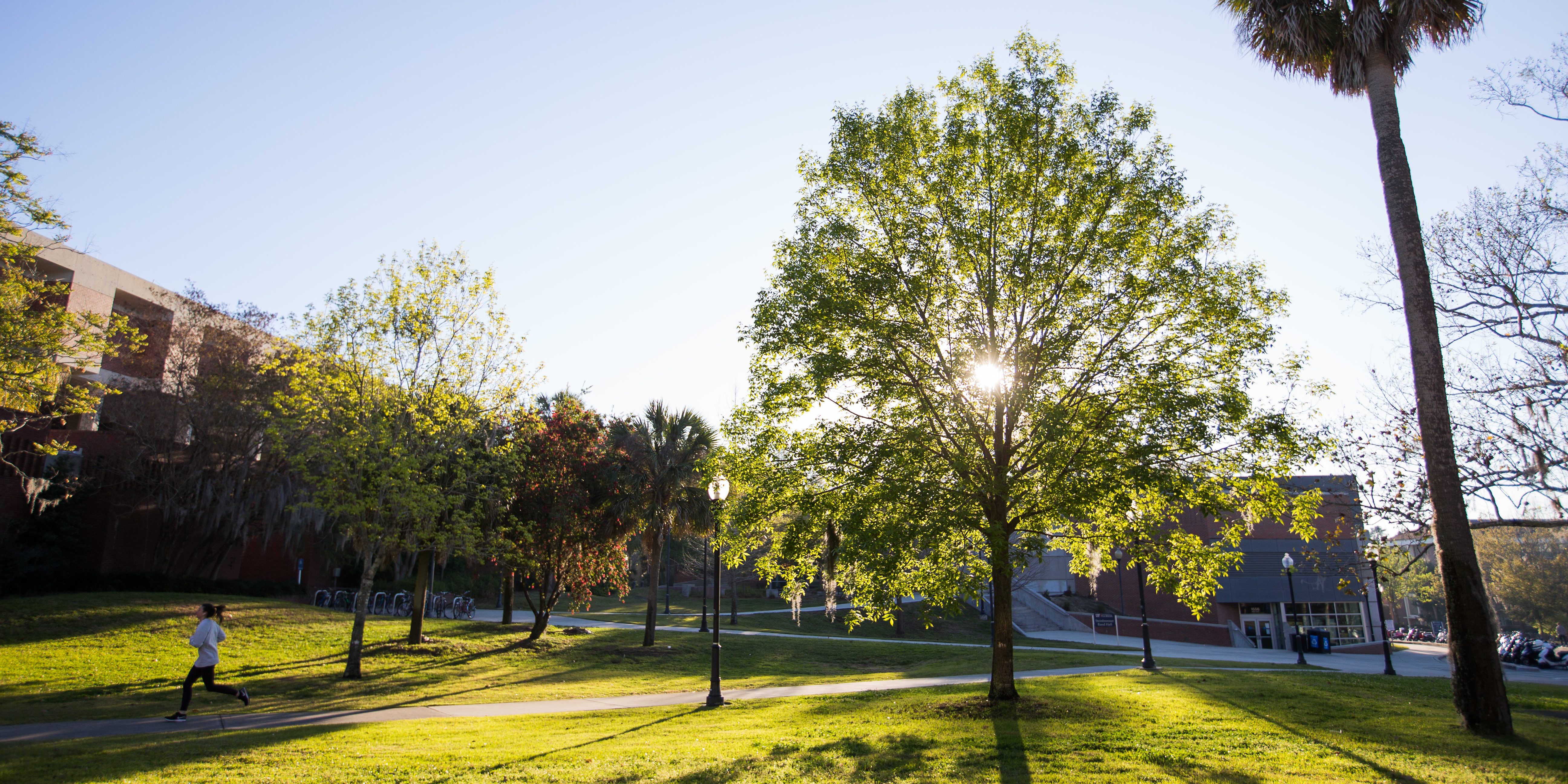- Homepage
- Campus Initiatives
- Energy
- Energy Efficiency in UF Buildings
Energy Efficiency in UF Buildings
Our everyday activities – plug-load from equipment such as computers and copiers and lighting – typically account for roughly 30-40% of a building’s energy use and the resulting carbon emissions. The remaining energy use and emissions are due to building design, construction, and daily systems operation. Overall energy consumption in UF buildings accounts for over 75% of UF’s carbon footprint.
How Energy is Used in UF Buildings
A large majority of UF buildings are cooled through a chilled water utility produced by UF’s Facilities Services (FS). This system cools the supply air to 45 degrees Fahrenheit. Each building is different, but many have a re-heat type system that uses heated, piped steam to heat the air back up to the desired air temperature set for the zone or space. Having a cooler temperature setting actually saves energy by not reheating the air. However, we must reheat to a level of comfort for the occupants. Currently, in our humid climate, this is the best way we have of removing the humidity from the air to keep our buildings healthy, and free of mold and mildew.
Improving Efficiency
We are continuously trying to improve our systems by increasing comfort and unit efficiency, while still focusing on decreasing energy consumption.
FS has had a program in place for several years to reduce energy consumption by re-commissioning buildings, retrofitting the chilled water loops and replacing lighting systems. Additionally, they schedule temperature set-backs for the heating, ventilating and air conditioning (HVAC) systems in buildings when they are unoccupied. These building temperature setback programs are also in full effect during the holiday season.
The most energy intensive spaces on campus are research laboratories. Fume hoods are big energy hogs and much of the equipment used in research is also energy intensive. The Office of Sustainability is working with campus stakeholders to develop a program to help researchers curb some of this energy use through behavior.
In 2011, the O’Connell Center Parking garage was retrofitted with Induction lighting. Induction is fluorescent lighting without any electrodes or electrical connections to the inside of the tube, meaning the energy is transferred via an inductive coil. Since there are no electrodes, there is very little degradation by turning on and off the lights like traditional fluorescent lighting, so these lights are rated to last 100,000 hours.
You may also be interested in:
Energy & Climate Action ᛫ Sustainability Progress & Planning ᛫ Get Involved ᛫ Faculty & Staff Guide ᛫ Sustainable UF E-Newsletter ᛫ Press Releases



